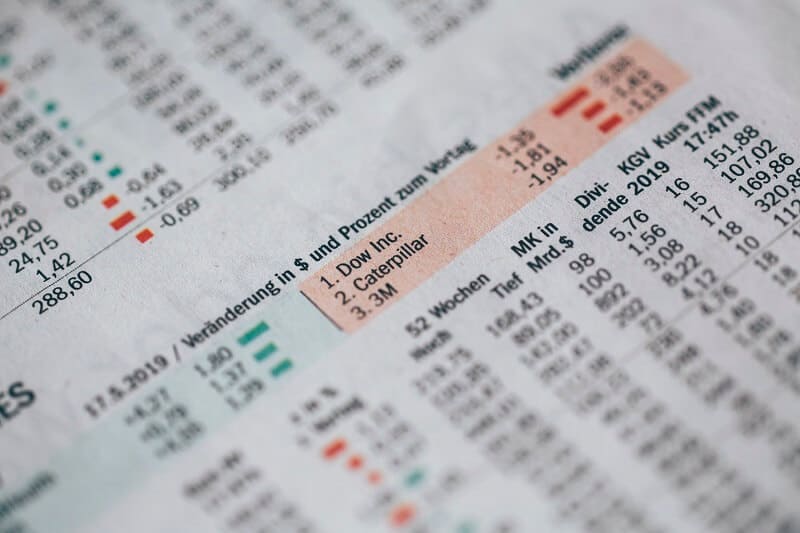
ROI is a useful method to compare different investment opportunities, but it has limits
ROI or Return on Investment estimates the gain or loss created on an investment related to the amount of money invested. Investors use ROI to compare the performance of different investments or to compare a company’s profitabilities. In essence, the Return on Investment measures the gain or loss of some investment relative to the capital invested.
The main goal of investing is profit, so it’s essential to seek investments that give the biggest potential return. ROI or Return on investment is the ratio of profitability that measures how big return will be on some investment relative to the costs. Commonly, you can see ROI as a percentage. This measure is very important when you want to evaluate an investment.
Also, ROI is a valuable tool when you want to compare several investment opportunities.
For example, you have some dilemma in which company to invest in because you saw several interesting options. And it seems that all of them are good. What are you going to do? Of course, you are going to estimate the efficiency of each company particularly to reveal which one is able to generate more profits.
How to calculate ROI or Return on Investment?
To calculate ROI just divide the net return on investment by the cost of investment and multiply the result by 100 since ROI is expressed in percentages.
The formula looks like this:
ROI = (Net Return / Cost of Investment) x 100
For example, you invested $10.000 in some stock a year ago. Now you sold it for $15.000. Let’s calculate the return on your investment.
$15.000 – $10.000 = $5.000
Your net return is $5.000. Let’s go further by following the formula.
ROI = ($5.000/$10.000) x 100 = 50%
And you find ROI on your investment is 50%. The calculation is quite simple.
To calculate ROI you can use this formula too:
ROI = ((Final Value of Investment – Initial Value of Investment)/Cost of Investment)) x 100%
Calculate ROI for different investments
The basic ROI formula reveals how much an investment generated overall. But, if you want to compare ROI from several investments, you will need to take into consideration the amount of time needed for some investment do give you return.
For example, let’s say you want to compare the ROI from two separate investments. Let’s do this using our previous example. The capital invested is $10.000. One year later you sold the shares for $15.000 and gained $5.000, so the ROI is 50%.
But two years prior to this purchasing you bought some stake of shares of the other company and you invested, let’s say, the same amount of $10.000. After 3 years of holding it, you sold these shares for $16.000.
Let’s calculate the ROI for this investment.
($6.000 / $10.000) x 100% = 60%
ROI is 60%. Great!
Wait for a moment. It just seems that this second investment yielded a higher ROI. You had to hold this investment 3 years to generate a return of 60%. In other words, time matters.
The first investment generated 50% after one year, the second returned more but after 3 years. It generated 60% which means the annual return of just 20%. When you compare these two investments and their annual yields it’s clear that you made a better investment decision in the first example. To put this simply, even if you have a better overall return on some investment think about the amount of time you needed to reach it. The annual ROI is what will tell you about how good your investment is. Do it for each investment in your portfolio and you’ll figure out the winners.
The other methods to calculate the return
There are more precise methods to calculate return on investment. ROI isn’t the only one and has its limits.
To be honest, calculating ROI is an excellent way to compare investment chances. But one of the limitations of ROI is the lack of risk estimation. ROI formula doesn’t factor it into consideration. The risk estimation is very important particularly when you need to calculate actual returns. ROI is good to show you a potential return on your investment. But will it tell you how much you can lose? Not necessarily.
You must know that higher returns are in tight connection with more risk. The Higher returns, the more risk involved. This is particularly true for stocks. They have higher returns than bonds, for example, but at the same time, they are riskier.
Almost the same is for companies. When the company has a lower credit rating, it will offer a higher interest rate on bonds to balance the investors’ risk.
For example, you purchased the bonds from a company described above. It offered you much higher returns on its bonds and you might think it is a better opportunity than some company with good credit rating. And you made a calculation and saw ROI of, let’s say, 60% after one year. So, let’s see why it wasn’t a smart decision. What will you do if that company fails to pay interest rates? Well, you’ll end up literally without any returns.
Can you see where the point is? ROI is great but it measures only the potential return on investment, not actual. For proper decision, you will need a Real Rate of Return that takes into account inflation, taxes, and other factors. Also, the Net Present Value (NPV) is more suitable for investors like to estimate returns in the far future.
This metric is helpful
As most important, it is a simple metric, and easy to calculate and understand. You cannot misunderstand it. Moreover, it is a general measure of profitability applied everywhere all over the world. When you see that some investment has an ROI of 30% that is the same in the US or Europe or Africa. Thanks to its simplicity ROI is good enough for estimation the efficiency of a single investment or to compare the returns from several different investments.
What is a good ROI?
Investment returns must beat inflation, taxes, and fees because no one would like to hold an average investment. We all need excellent investments. That’s the whole wisdom, to earn a higher rate of return on investments.
A good ROI depends on the investment. The truth is that you have to keep expectations rational. For example, if you are expecting to gain 20% from blue-chips over the next 10 years, we have to say your expectations are pretty much unrealistic. It isn’t going to happen. Whoever promises you that, plays on your inexperience. For instance, the stock market’s average annual return is about 10%, for more aggressive investors it was about 15% per year. And it was almost the same for the last 100 years. Take it or leave it. Whoever promises you a moon is lying or trying to fraud you.
Bottom line
ROI or Return on Investment calculation isn’t an accurate metric but it is a good way to reach the approximate figures. You can always expect some deviation or error in ROI calculation.
ROI is rated as the single most significant measure of the efficiency of an investment. A better ROI means that investment has satisfying results. When you want to compare the ROI of different investments it is important to compare the companies from the same or similar sectors.
This metric is very connected to what happened in the recent past. You have to follow a simple rule of thumb: the lower the recent returns, the higher the future returns. And vice versa.



